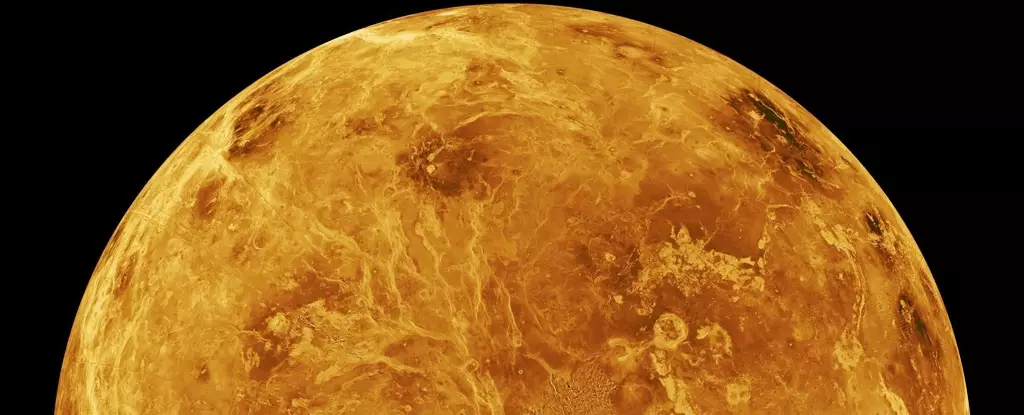The early Solar System was a chaotic realm, characterized by relentless bombardments and the dynamic interactions of newly formed celestial bodies. As planets coalesced, they were subject to a barrage of meteoroids and other space debris, leaving indelible marks in the form of craters and impact basins. Mercury, Mars, and our Moon bear the marks of these violent collisions, their surfaces littered with scars and history. Even our Earth, with its active geological processes, has preserved traces of past impacts, albeit in less visible forms. Yet, when it comes to Venus—often shrouded in mystery—the tale is more perplexing. While the planet’s surface showcases a plethora of craters, the apparent absence of large impact basins, particularly those exceeding 300 kilometers in diameter, raises intriguing questions about its past.
Recent studies have ignited discussions among planetary scientists, as new features called tessera terrain challenge long-standing assumptions about Venus’ geological history. These formations, characterized by their intricate, concentric ring patterns, span an impressive 1,500 kilometers across. The most noteworthy of these regions, the Haastte-Baad Tessera, appears to be a product of significant impacts from ancient celestial bodies, occurring when Venus still harbored a molten interior beneath its thin crust—a staggering 3.5 billion years ago.
Geologist Vicki Hansen of the Planetary Science Institute encapsulates the significance of these findings, suggesting that if the Haastte-Baad Tessera is indeed an impact structure, it could represent the largest and oldest known on Venus. This revelation has the potential to reshape our understanding of the planet’s formation and its evolutionary trajectory. It introduces the notion that impact structures can diverge significantly in appearance, delineating a complex interplay between the nature of the impacting body and the characteristics of the planetary surface.
Analysis of the tessera terrain signifies that Venus might have suffered from two successive impacts. When the first massive object struck, it breached the thin crust of Venus, forcing magma from the underlying mantle to the surface—a phenomenon akin to the formation of a geyser. This rapid release of molten material can create distinct geological patterns, which Hansen and her colleagues have modeled to understand better the conditions that led to the formation of Haastte-Baad Tessera.
The modeling suggests that these impacts, likely caused by sizable bodies approximately 75 kilometers across, were consequential, forming a topographic arrangement resembling a lava dome. Such a process is not unique to Venus; other celestial bodies, like Callisto—a moon of Jupiter—exhibit similar multi-ring structures resulting from catastrophic impacts.
When we compare Venus with its celestial neighbors, a notable divergence becomes clear. Unlike Mars and the Moon, which possess thick lithospheres capable of retaining large impact craters, Venus’ lithosphere was considerably more pliable in its earlier history. This intrinsic difference has implications for the geological features observed today. The expectation of vast impact craters on Venus has been confounded by the reality of flat, low-lying terrains, suggesting that past geological processes were more complex than previously conceived.
The realization that even massive impacts do not necessarily yield deep craters on Venus provides new avenues for understanding planet formation in a hotter, more dynamic environment. Scientists can now consider how such a thin crust, along with the geological aftermath of impacts, shapes a planet’s surface over billions of years.
As scientists delve deeper into tectonic modeling and geophysical simulations, the cases such as Haastte-Baad Tessera expose the need for new methodologies that align with the unique characteristics of Venus. This could enhance future exploration missions, which may apply these insights to focus on sub-surface investigations that could unveil more about Venus’ complexities.
With the landscape of Venus beginning to reveal its secrets, planetary scientists stand on the threshold of a deeper understanding of the planet’s history and formation. The absence of large impact craters coupled with the presence of tessera formations marks a profound shift in our comprehension of not only Venus but of planet-wide processes active during the Solar System’s youth. Continued research in this field holds the promise of unveiling further mysteries that surround our enigmatic neighboring planet, never ceasing to attract the intrigue and excitement of astronomers around the world.


Leave a Reply